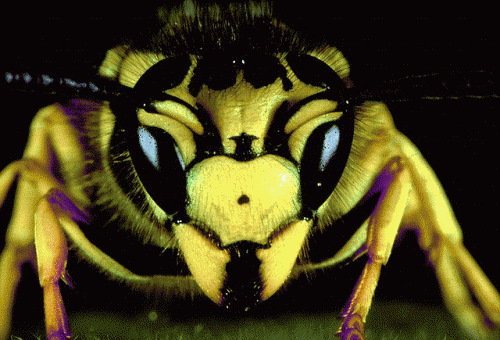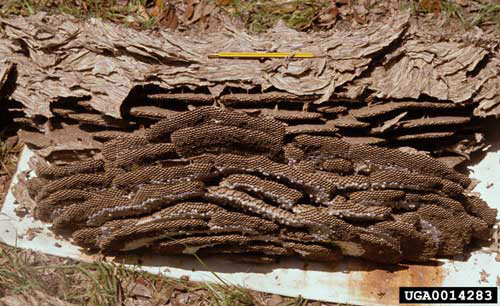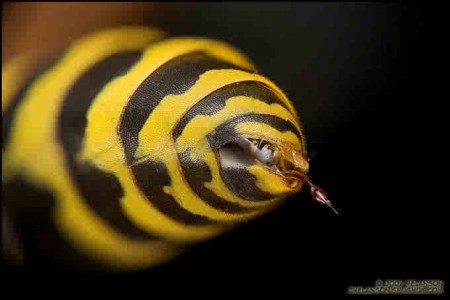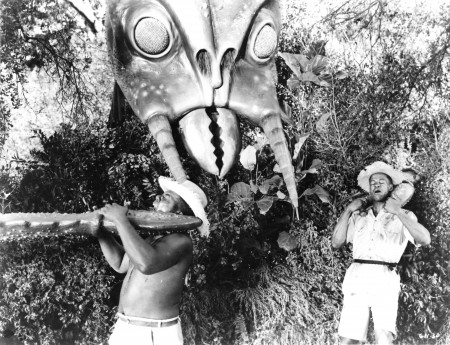 My foot was raised above the tall grass when I saw the hole, an enormous opening for this species, a good 1 and 1/2 inches across. I stopped, stationary, balancing on my right leg. The creatures flew past my arms. The five dogs were all within three or four feet. I should have seen the flight pattern, a regular sweeping delivery of insect after insect arriving from all vectors of the compass but who aligned their flight pattern and made their approach from the north and dropped to the entrance of the hive along a precise downward angle. From my eye’s vantage point six feet above the ground, the entrance looked like a photograph taken by a spy satellite of some underground secret facility. That yellow jackets, a distinctive yellow striped species of wasp, lived there made it a forbidding place, and for the dogs, potentially deadly.
My foot was raised above the tall grass when I saw the hole, an enormous opening for this species, a good 1 and 1/2 inches across. I stopped, stationary, balancing on my right leg. The creatures flew past my arms. The five dogs were all within three or four feet. I should have seen the flight pattern, a regular sweeping delivery of insect after insect arriving from all vectors of the compass but who aligned their flight pattern and made their approach from the north and dropped to the entrance of the hive along a precise downward angle. From my eye’s vantage point six feet above the ground, the entrance looked like a photograph taken by a spy satellite of some underground secret facility. That yellow jackets, a distinctive yellow striped species of wasp, lived there made it a forbidding place, and for the dogs, potentially deadly.
 The nest itself, hidden 8 to 10 inches under the surface, might contain over 2000 insects, all of them workers except for 1 queen. All of those workers can swarm within seconds if they receive signals that the nest has been attacked. Kill one yellow jacket and it releases an alarm pheromone that brings its mates hurtling toward … you. Each is armed with a stiletto-like stinger; it does not detach. It can be thrust again and again into the skin, each time depositing a poison containing histamine. An allergic reaction can close off the respiratory system. Once I watched a young woman, allergic to venom, strip down to her skivvies after stepping on a nest. They swarmed her. She dropped her pack and ran, throwing clothes left and right as she sprinted. She carried an anaphylactic shock kit and survived, but we had to escort her out of the wilderness to an ambulance; she had to be admitted to the hospital to deal with the aftereffects of the poison on her system.
The nest itself, hidden 8 to 10 inches under the surface, might contain over 2000 insects, all of them workers except for 1 queen. All of those workers can swarm within seconds if they receive signals that the nest has been attacked. Kill one yellow jacket and it releases an alarm pheromone that brings its mates hurtling toward … you. Each is armed with a stiletto-like stinger; it does not detach. It can be thrust again and again into the skin, each time depositing a poison containing histamine. An allergic reaction can close off the respiratory system. Once I watched a young woman, allergic to venom, strip down to her skivvies after stepping on a nest. They swarmed her. She dropped her pack and ran, throwing clothes left and right as she sprinted. She carried an anaphylactic shock kit and survived, but we had to escort her out of the wilderness to an ambulance; she had to be admitted to the hospital to deal with the aftereffects of the poison on her system.
 During the warm months the nest functions like a perpetual wasp making machine. A fertilized queen alone survives the winter. She builds a small nest and lays her first few eggs. She forages for food and defends the nest until they hatch and can operate on their own. She mates with drones and never leaves the nest again. The workers muster out each day looking for insects to kill and grind to pulp to bring back to feed to more larvae that in turn mature, muster out, kill more insects, pulp them and on it goes.
During the warm months the nest functions like a perpetual wasp making machine. A fertilized queen alone survives the winter. She builds a small nest and lays her first few eggs. She forages for food and defends the nest until they hatch and can operate on their own. She mates with drones and never leaves the nest again. The workers muster out each day looking for insects to kill and grind to pulp to bring back to feed to more larvae that in turn mature, muster out, kill more insects, pulp them and on it goes.
I remember watching a B movie called Monster from Green Hell when I was a child and being thrilled by the comparison I made between the grisly, waspy creatures hunting human beings in the jungle and the insects I had observed at war in the grass and fields where I roamed. If I lowered my eyes and slowed down and just watched in stillness, everything small seemed to be eating or being eaten.

A still from Monster from Green Hell
While mowing I’ve stepped onto nests often enough to have been stung many times over. I jump, shout, curse, run. Then I return … armed with Raid or a clear jar that seals the single entrance, and once I poured lighter fluid in at night, lit a match and a flare shot out of the ground. From a vantage point far above, it must have looked like some feral thing worshipping fire. They might even have been able to hear me whoop in delight at that rocket of flame, but they would not have been able to hear what immediately followed — the slight crackle of combs and creatures frying. Only I could hear their harrowing.